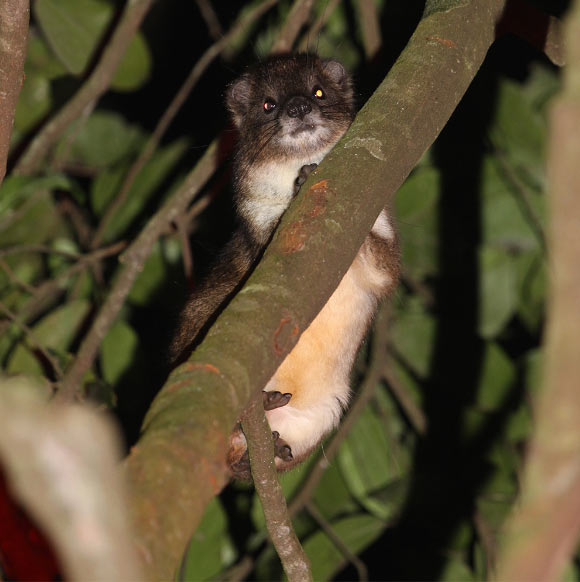Zoologists believe they have found a previously unknown species of tree hyrax in the Taita Hills, Kenya.
Tree hyraxes, members of the genus Dendrohyrax, are medium-sized (3-5 kg) mammals native to Africa.
Also known as tree dassie, these animals are sometimes active by day, but, for the main part, they are nocturnal, especially in areas where they are hunted.
They are believed to be solitary, and to rely on acoustic communication for advertising their position relative to one another during the night.
There is general agreement among zoologists that there are three species of tree hyrax: the southern tree hyrax (Dendrohyrax arboreus), the western tree hyrax (Dendrohyrax dorsalis), and the eastern tree hyrax (Dendrohyrax validus).
Due to their arboreal and nocturnal habits, they are difficult to study in the wild, and much of what is known, or inferred, about their distributions is based on museum records.
“Very little is known about the diversity and ecology of tree hyraxes because these animals, which look like large guinea pigs but are distant relatives of elephants, are mainly active at night in the tree canopies in Africa’s tropical forests,” said University of Helsinki’s Dr. Hanna Rosti and colleagues.
“These animals are known to be able to scream with the strength of more than one hundred decibels, but the ‘strangled thwack’ calls that have been recorded in Taita’s forests have not been described anywhere else.”
The researchers recorded and analyzed vocalizations of poorly known nocturnal mammals — the tree hyrax (Dendrohyrax sp.), the small-eared greater galago (Otolemur garnettii), and the dwarf galago (Paragalago sp.) — in the montane forests of the Taita Hills.
Their results suggest that the tree hyrax from Taita Hills may be a species new to science, as it produces a characteristic call not previously known from other populations.
“The tree hyrax song may continue for more than 12 min, and it consists of different syllables that are combined and repeated in various ways,” the scientists said.
“The singing animals are probably males attempting to attract females that are willing to mate,” Dr. Rosti added.
The results also suggest that the two populations of dwarf galago in the Taita Hills may belong to different species.
“The taxonomy of many nocturnal mammals remains poorly known, and many populations have not been studied at all yet,” said co-author Dr. Henry Pihlström, a researcher at the University of Helsinki.
The team’s paper was published in the journal Discovery.
_____
Hanna Rosti et al. 2020. Vocalization Analyses of Nocturnal Arboreal Mammals of the Taita Hills, Kenya. Diversity 12 (12): 473; doi: 10.3390/d12120473








